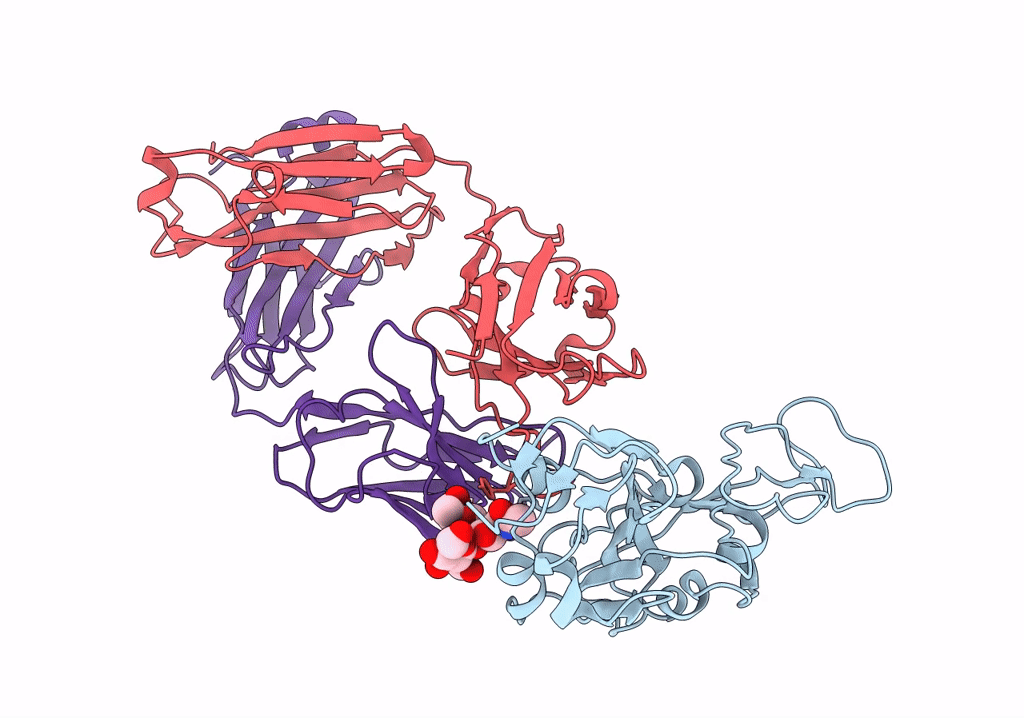
Deposition Date
2022-04-18
Release Date
2022-08-10
Last Version Date
2024-10-09
Entry Detail
PDB ID:
7UPX
Keywords:
Title:
Three RBD-down state of SARS-CoV-2 D614G spike in complex with the SP1-77 neutralizing antibody Fab fragment (local refinement of the RBD and Fab variable domains)
Biological Source:
Source Organism:
Severe acute respiratory syndrome coronavirus (Taxon ID: 2901879)
Homo sapiens (Taxon ID: 9606)
Homo sapiens (Taxon ID: 9606)
Host Organism:
Method Details:
Experimental Method:
Resolution:
3.20 Å
Aggregation State:
PARTICLE
Reconstruction Method:
SINGLE PARTICLE


